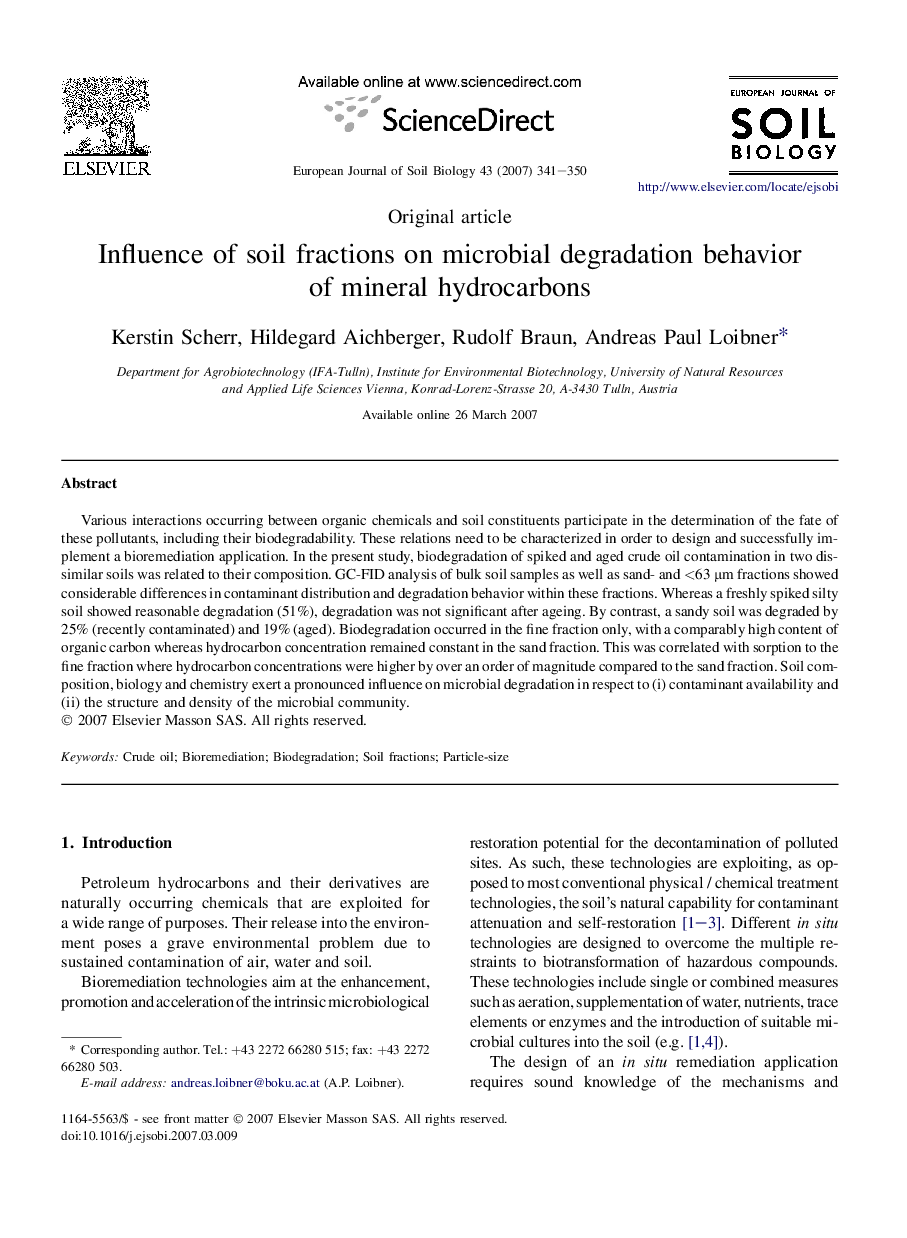| Article ID | Journal | Published Year | Pages | File Type |
|---|---|---|---|---|
| 4392404 | European Journal of Soil Biology | 2007 | 10 Pages |
Various interactions occurring between organic chemicals and soil constituents participate in the determination of the fate of these pollutants, including their biodegradability. These relations need to be characterized in order to design and successfully implement a bioremediation application. In the present study, biodegradation of spiked and aged crude oil contamination in two dissimilar soils was related to their composition. GC-FID analysis of bulk soil samples as well as sand- and <63 μm fractions showed considerable differences in contaminant distribution and degradation behavior within these fractions. Whereas a freshly spiked silty soil showed reasonable degradation (51%), degradation was not significant after ageing. By contrast, a sandy soil was degraded by 25% (recently contaminated) and 19% (aged). Biodegradation occurred in the fine fraction only, with a comparably high content of organic carbon whereas hydrocarbon concentration remained constant in the sand fraction. This was correlated with sorption to the fine fraction where hydrocarbon concentrations were higher by over an order of magnitude compared to the sand fraction. Soil composition, biology and chemistry exert a pronounced influence on microbial degradation in respect to (i) contaminant availability and (ii) the structure and density of the microbial community.
